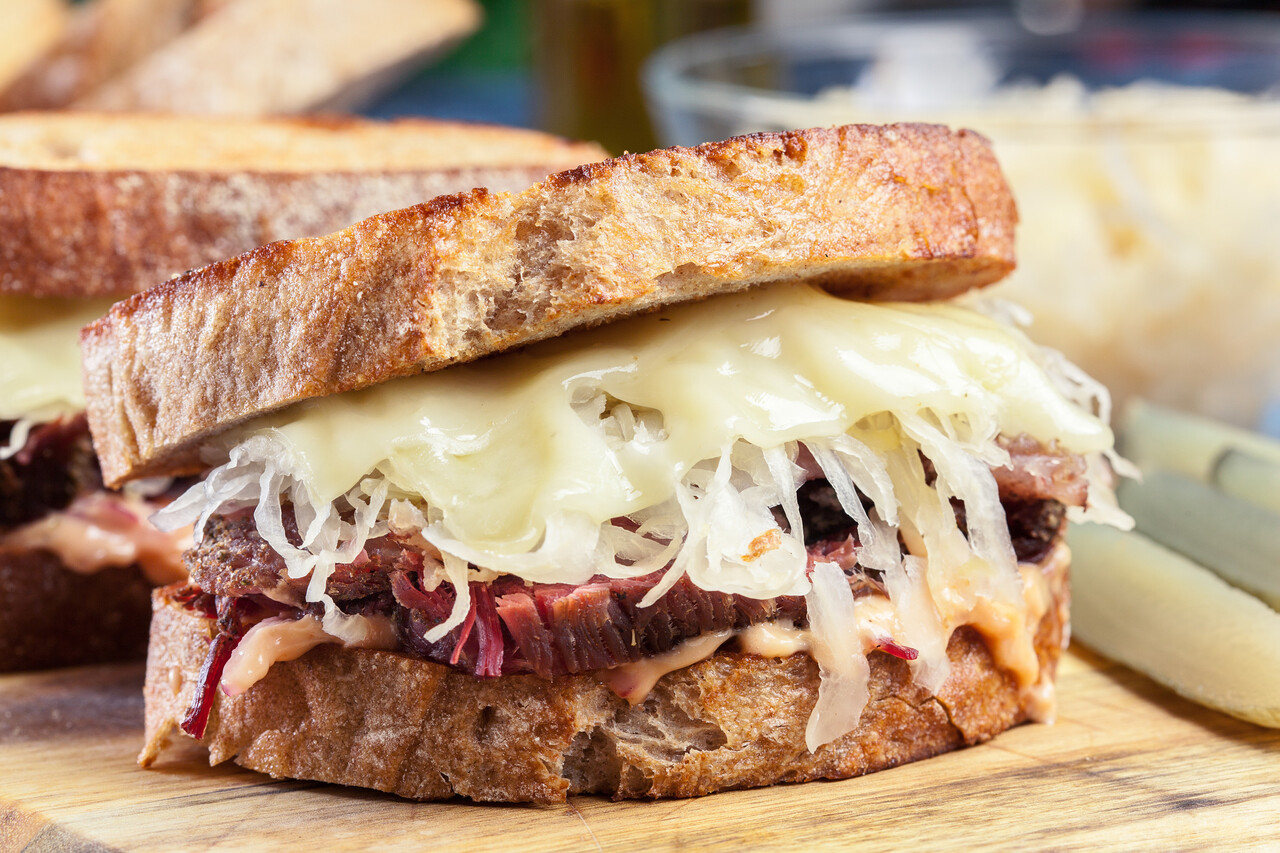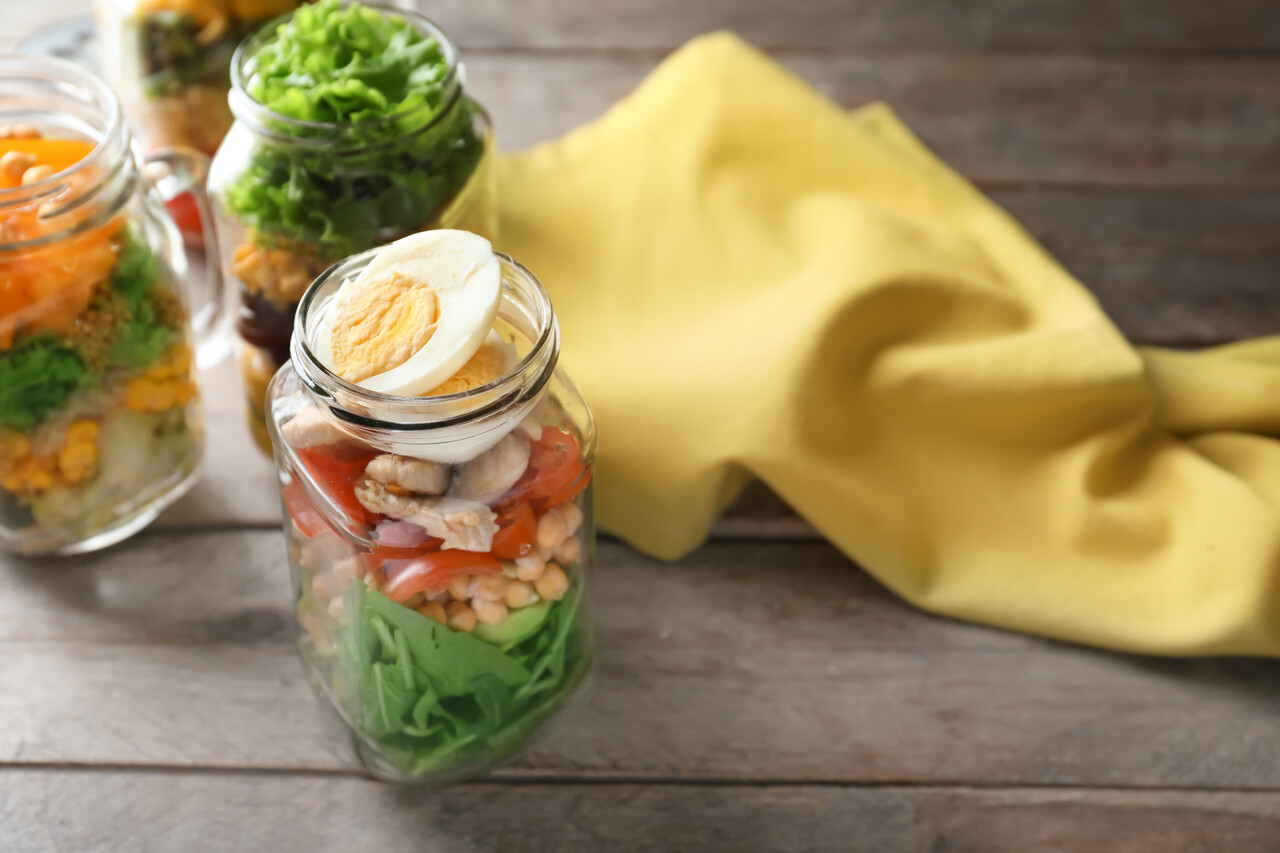9 Quick Korean Dishes You Can Actually Make On A Weeknight
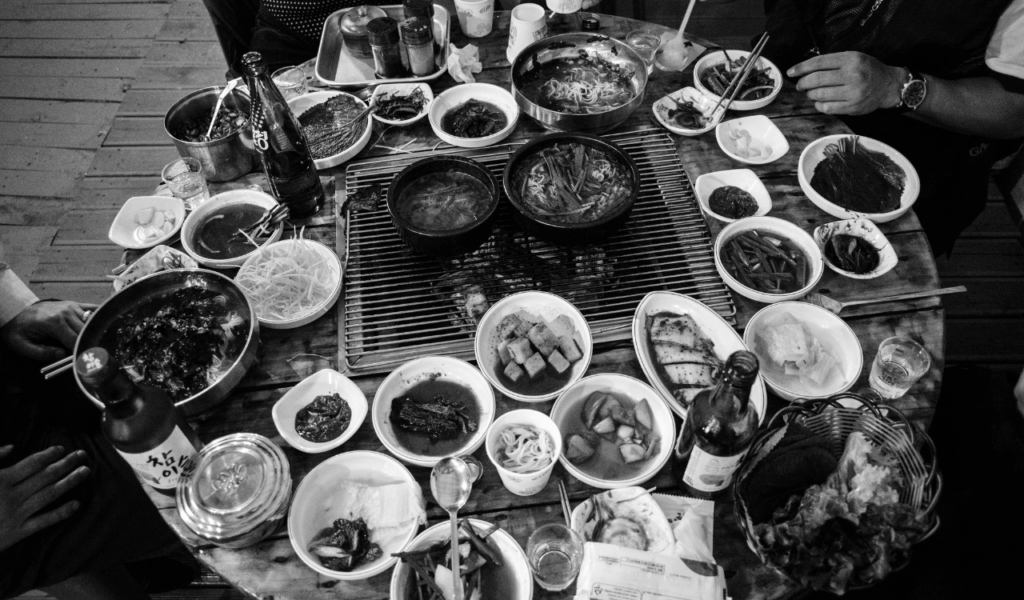
Cooking Korean food doesn’t have to be difficult or time-consuming. Some of the tastiest Korean dishes can actually be prepared in less than 30 minutes, which makes them ideal for hectic weeknights when you want a filling, healthy, and interesting meal without requiring hours of preparation. Korean food is renowned for its ability to balance flavors; dishes frequently combine elements of sweetness, saltiness, spice, sourness, and umami. Lean proteins, fermented ingredients like kimchi, a healthy dose of vegetables, and condiments like soy sauce, sesame oil, or gochujang (Korean chili paste) are all common components of these dishes. The best part is that most recipes only require a single pan or bowl, making cleanup a breeze. These are nine easy Korean recipes that anyone can prepare after work using common ingredients and a lot of taste.
1. Kimchi Fried Rice (Kimchi Bokkeumbap)
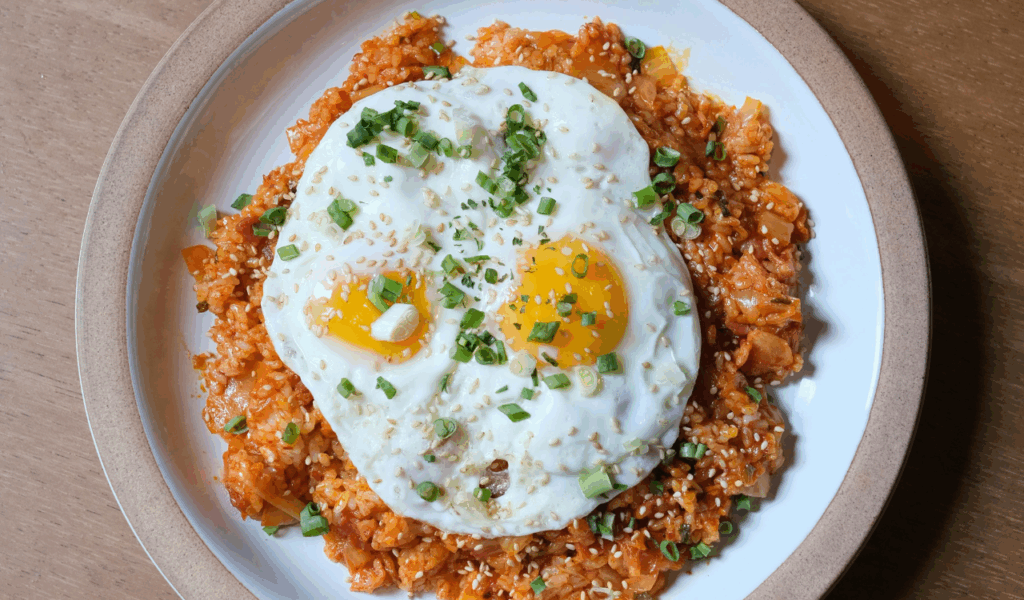
The best Korean comfort food is kimchi fried rice, which is flavorful, incredibly easy to prepare, and the perfect meal to clean out the refrigerator. The main component is kimchi, the well-known fermented cabbage that adds umami, tang, and spice. If you can, use day-old rice because it fries up better and is drier. Add a little oil, garlic, and a spoonful of soy sauce or gochujang to the chopped kimchi and sauté. Stir in rice until heated through and coated evenly. For added protein, you can add diced tofu, chicken, beef, or even canned tuna. Place a fried egg on top and garnish with green onions or sesame seeds. A spicy, savory, comforting dish that tastes like takeout but is quicker and better is the end result of the 15-minute process.
2. Beef Bulgogi Bowls
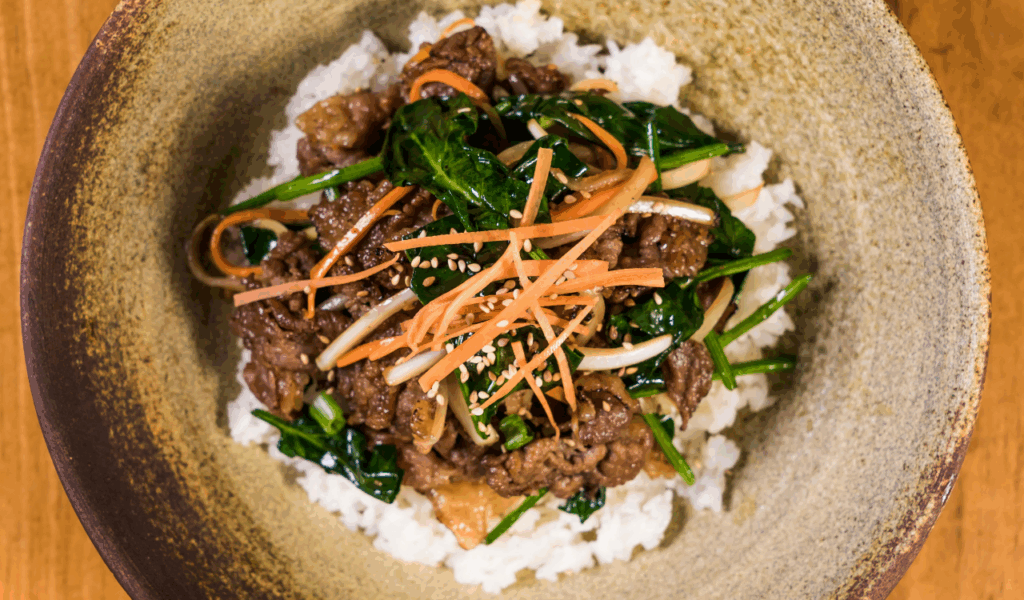
The traditional Korean barbecue dish known as “bulgogi,” or “fire meat,” is made from thinly sliced beef marinated in a mixture of soy sauce, sesame oil, sugar, garlic, and occasionally pear or apple juice for added sweetness. Bulgogi is typically grilled, but for a weeknight version, you can quickly stir-fry it in a pan. While you prepare your rice and vegetables, let the beef marinate. Then, flash-cook it over high heat. Serve with shredded lettuce, cucumber, a fried egg, or a drizzle of gochujang sauce in a bowl over steamed rice. This dish’s smoky, salty, and sweet flavors make it impossible to resist. If you’re really pressed for time, you can use ground beef, flank steak, or sirloin. Flavorful and ready in about 25 minutes.
3. Bibim-Guksu (Spicy Cold Noodles)
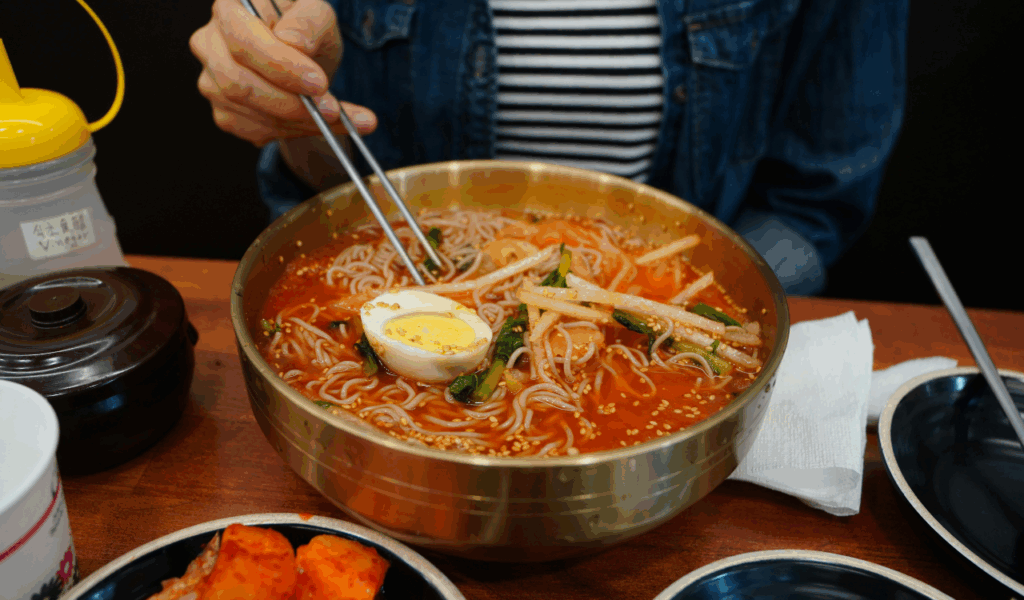
The ultimate easy and refreshing Korean noodle dish, bibim-guksu is perfect for hot nights or when you’re in the mood for something flavorful but light. Gochujang, vinegar, soy sauce, sugar, garlic, and sesame oil are the ingredients of this spicy, sweet, and tangy dish, which literally translates to “mixed noodles.” Simply toss the noodles in the sauce after they have been cooked and cooled under cold water, and garnish with sesame seeds, hard-boiled egg halves, crunchy cucumbers, and shredded carrots. For an added twist, some variations include thin slices of fruit, such as pears, or kimchi. This dish is incredibly flavorful and requires very little cooking. It’s the ideal weeknight dinner in 20 minutes or less because it’s light, zesty, and full of contrast—cool noodles against spicy heat.
4. Quick Tofu Stir-Fry with Vegetables
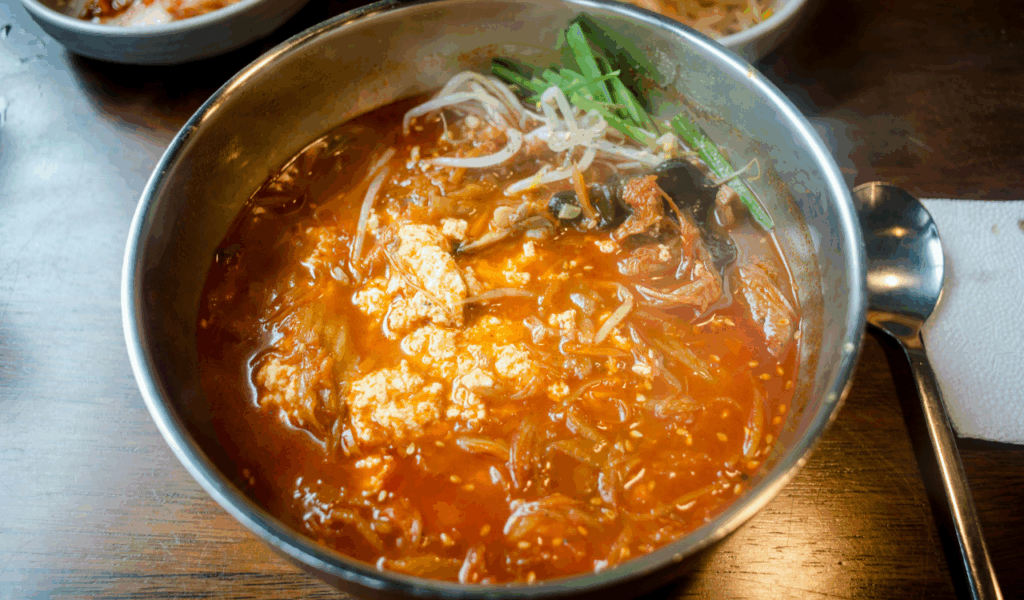
A plant-based Korean dish that is high in protein, fiber, and flavor is tofu stir-fry. For people who want to eat more plant-based foods without compromising flavor, this is ideal. Firm tofu should first be pressed and cubed before being pan-fried until the outside is golden and crispy. With a sauce of soy sauce, garlic, sesame oil, and a spoonful of gochujang or red pepper flakes for seasoning, stir-fry a variety of vegetables (bell peppers, onions, zucchini, or mushrooms all work well). Add a final garnish of green onions or sesame seeds. It takes about 20 minutes to prepare, is filling but nutritious, and pairs well with rice, noodles, or even lettuce wraps. Excellent for weeknights when you don’t want to spend a lot of time in the kitchen but still want something filling.
5. Sundubu Jjigae (Spicy Soft Tofu Stew)

Even when you’re exhausted after work, you can still make sundubu jjigae, a comforting and spicy stew that’s ideal for cold nights. It is typically flavored with garlic, gochugaru (Korean chili flakes), soy sauce, anchovy, or vegetable broth. It is made with silken tofu, which gives it a delicate, almost custard-like texture. For a vegetarian version, use zucchini and mushrooms, or add seafood like shrimp or clams. Just before serving, a raw egg is typically placed on top of the stew, which simmers quickly, and it cooks gently in the hot broth. In less than 30 minutes, you’ll have a hearty, spicy, and filling supper served with a bowl of steamed rice. It’s a flavorful and calming one-pot wonder.
6. Japchae (Stir-Fried Glass Noodles)

Dangmyeon, or Korean glass noodles made from sweet potato starch, are used to make japchae, a savory, slightly sweet, and colorful noodle dish. The texture of these noodles is slippery and chewy, making them suitable for stir-frying. Even though japchae is typically served at parties, if you prepare the ingredients in advance, you can make it for a quick dinner. Add the noodles, sliced carrots, spinach, onions, mushrooms, and, if desired, thin strips of beef. Next, combine everything with a mixture of sugar, sesame oil, and soy sauce. It comes together quickly, but for the best texture, each ingredient must be cooked separately. Serve warm or cold. Naturally gluten-free, japchae is substantial without being heavy, and leftovers get even better the following day.
7. Bibimbap (Mixed Rice Bowl)
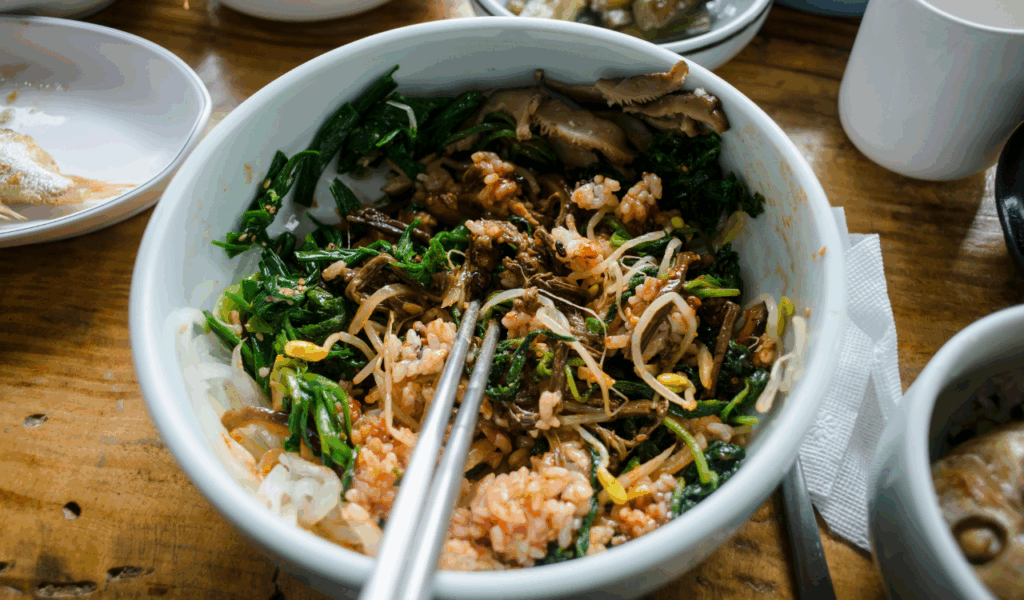
Bibimbap looks as good as it tastes. In essence, it’s a rice bowl that can be customized and topped with spicy gochujang sauce, a protein (such as beef, tofu, or egg), and sautéed vegetables (such as spinach, carrots, bean sprouts, and mushrooms). Every bite is a medley of textures and flavors—crunchy, creamy, spicy, savory, and slightly sweet—because everything is combined right before eating. Use leftovers or pre-cut vegetables if you’re pressed for time, and keep gochujang sauce in the refrigerator. Even a simple bowl version works well for a weeknight meal, though some variations include crispy rice by pan-frying the rice in a stone bowl (dolsot bibimbap). In every aspect, it is nourishing, vibrant, and incredibly reassuring.
8. Gochujang Buttered Noodles
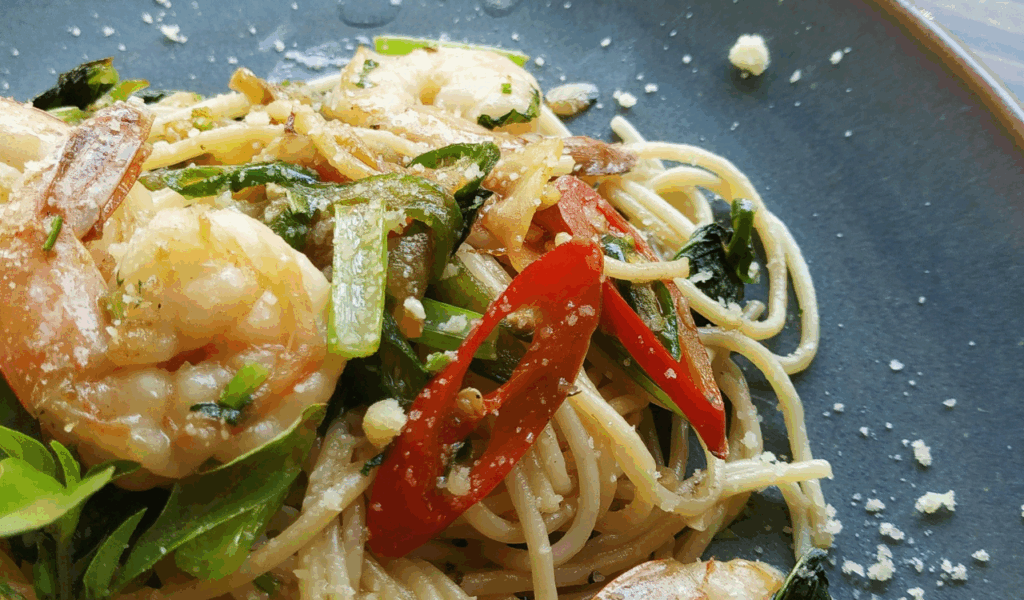
This quick and tasty fusion dish with Korean influences blends common ingredients from the pantry. Begin by preparing your preferred long noodles, such as udon, ramen, or spaghetti. Melt butter and garlic in a pan, then add gochujang for depth and heat. To balance the flavors, add a little soy sauce, rice vinegar, or honey. Add the noodles to this hot, buttery sauce and top with a soft-boiled egg, sesame seeds, or green onions. The outcome? Noodles are rich, creamy, and strangely addictive with a spicy kick. This dish, which takes only 15 minutes to prepare, is ideal for times when you’re tired, hungry, and want something exciting but comforting. For those who are unfamiliar with Korean flavors, it’s a great way to introduce gochujang, and the amount of spice can be readily adjusted.
9. Tteokbokki-Style Stir-Fry (Simplified)
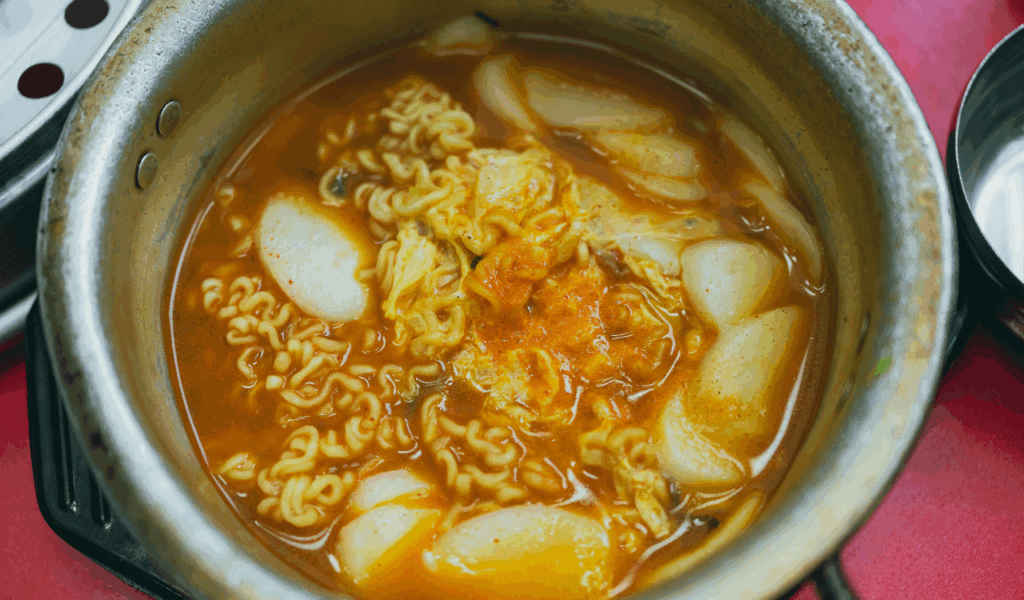
One of the most well-liked street foods in Korea is tteokbokki, which is typically made with chewy rice cakes cooked in a thick, spicy, sweet sauce. A weeknight-friendly shortcut version omits the lengthy simmer, but the traditional version can take some time. Use rice cakes that have already been cooked, or use firm tofu or gnocchi instead. They are sautéed with water, a little sugar, gochujang, garlic, and soy sauce until the sauce coats and thickens everything. Add optional ingredients such as boiled eggs, scallions, or slices of fish cake. You can make a spicy, chewy, cozy, and utterly satisfying dish in just twenty to twenty-five minutes. Perfect for cold nights or when you want a strong-tasting dinner quickly, it’s a quick way to savor the flavor of tteokbokki without having to wait around.
